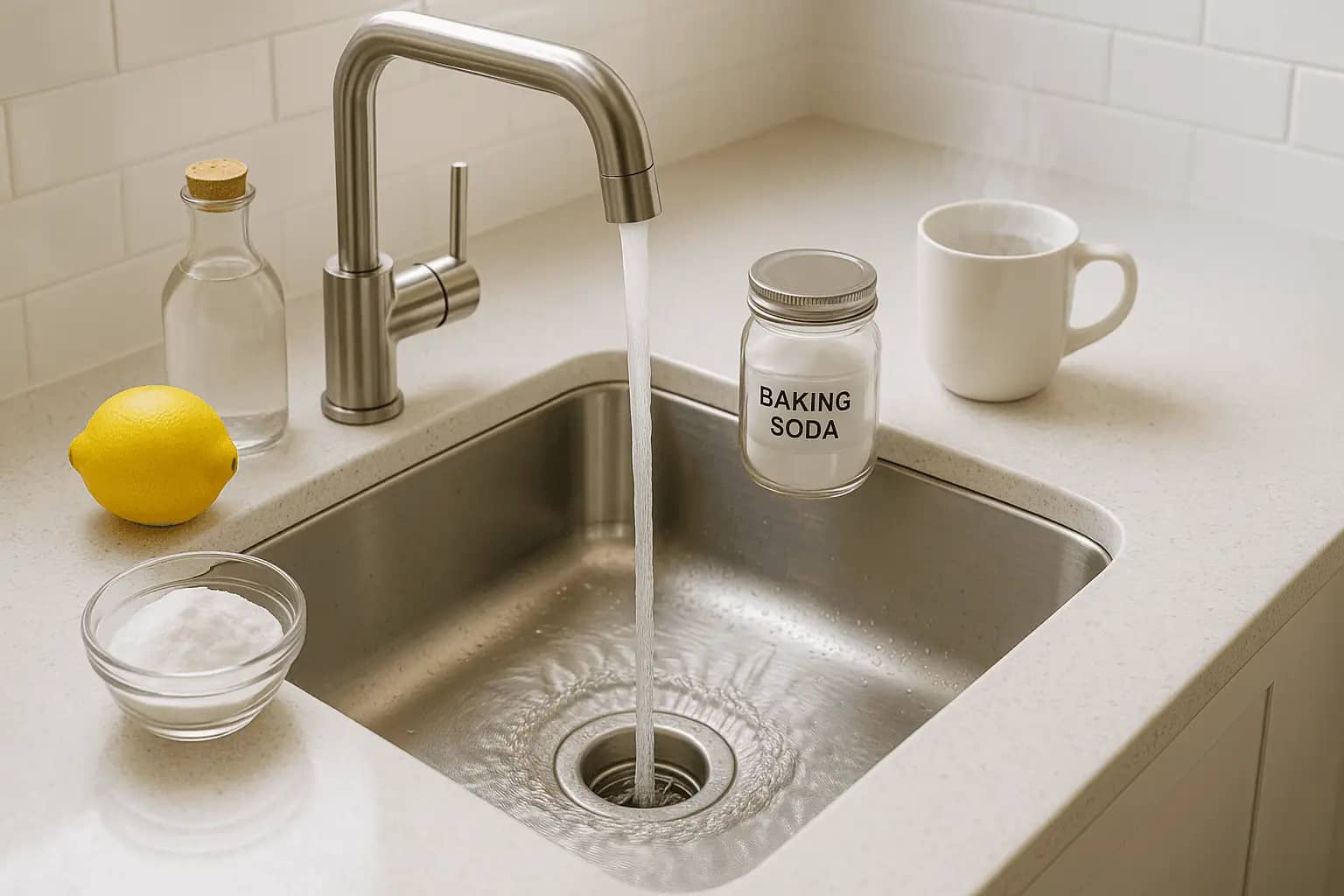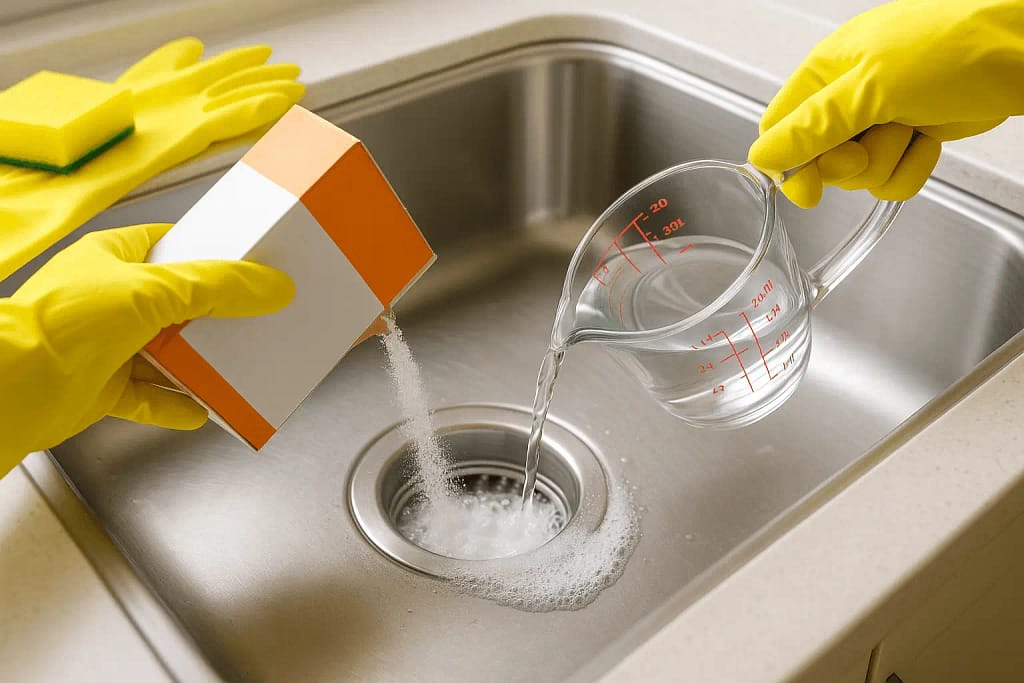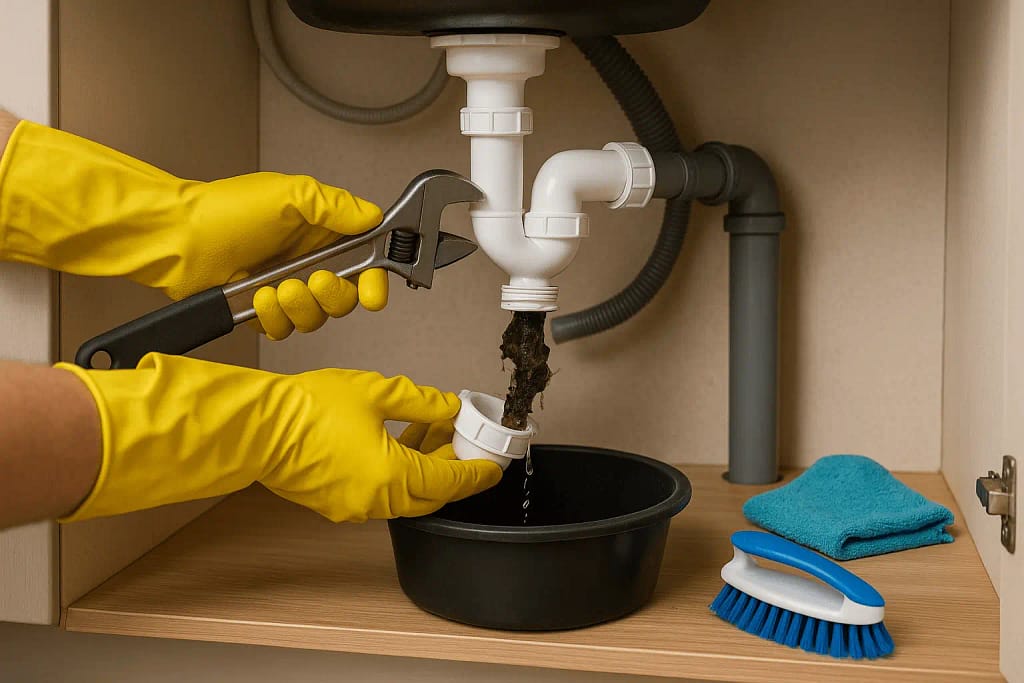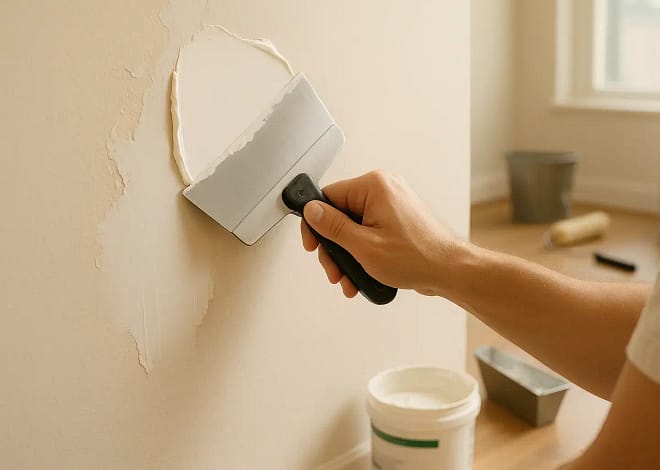
How to Clean Kitchen Sink Drain Pipe (Without Losing Your Mind)
Let’s be real: nothing disrupts the rhythm of a kitchen like a smelly, slow-draining sink. One minute you’re rinsing off a cutting board, the next you’re ankle-deep in grayish water wondering if the pipe under the sink is secretly plotting against you. If you’ve ever been there, you’re definitely not alone, and yep, there’s a fix for that.
Learning how to clean kitchen sink drain pipe doesn’t require a plumber on speed dial or a science degree. It just takes a little know-how, the right tools (which you probably already have), and a touch of patience. Oh, and maybe some gloves. Things can get a little… gunky.
Let’s walk through it together with zero fluff and maximum results.
The Not-So-Subtle Signs Your Drain Pipe Is Begging for Help
First, let’s figure out if your sink is crying out for attention or just having a moody day. Here’s how to tell:
- Slow drainage: Water lingers like it’s got nowhere else to be.
- Unpleasant odors: A weird smell that no candle can mask? That’s probably your drain.
- Gurgling sounds: If your sink sounds like it’s gargling mouthwash, yeah, that’s not normal.
- Frequent backups: Plunging once a week? Your sink needs a long-term solution.
Even if things aren’t completely clogged, these symptoms mean one thing. It’s time to start cleaning.
Why Cleaning Kitchen Sink Drain Matters More Than You Think
You might be thinking, “It’s just water going down a pipe, what’s the big deal?” Well, here’s the thing. That pipe doesn’t just carry water. Over time, it becomes the final resting place for grease, soap scum, food particles, and whatever mystery sludge came off your frying pan.
Here’s why you need to stay on top of cleaning kitchen sink drain:
- It keeps your kitchen hygienic. Bacteria and mold love warm, damp spaces. And guess what’s both of those things?
- It prevents damage. Left untreated, buildup can corrode pipes or cause leaks that cost way more than a bottle of vinegar.
- It makes life easier. No one has time for constant plunging or emergency plumber visits.
Trust us, regular maintenance beats full-blown plumbing disasters every single time.
Get Your Gear: Tools and Ingredients You’ll Need
Good news: you don’t need anything fancy. Most people already have the basics stashed under their sink or in a kitchen drawer.
Here’s your simple toolkit:
- Baking soda
- White vinegar
- Boiling water
- Plunger
- Old toothbrush or small pipe brush
- Adjustable wrench (for P-trap cleaning)
- Rubber gloves (optional, but very recommended)
Optional but effective:
- Enzyme-based drain cleaner (like Bio-Clean or Green Gobbler)
- Drain snake (for the stubborn stuff)
Ready? Let’s roll up those sleeves.
The Main Event: How to Clean Kitchen Sink Drain Pipe (Step-by-Step)

We’re finally getting into the fun part. If scrubbing pipes is your idea of fun. No judgment here. Let’s break it down.
Step 1: Start With a Boiling Water Rinse
Simple, but surprisingly effective. Boil a kettle or a large pot of water and slowly pour it down the drain in stages. This helps loosen grease and melt any fatty buildup clinging to the inside of the pipe.
Pro Tip: If you’ve got a double sink, block the other side with a drain stopper so all the heat and pressure goes down the clogged side.
Step 2: Go Natural – Baking Soda + Vinegar
Ah, the old-school combo your grandma probably swore by. And guess what? It works.
- Pour about ½ cup of baking soda down the drain.
- Follow it with 1 cup of white vinegar.
- Plug the drain to trap the fizz inside.
- Let it sit for 15–30 minutes.
- Flush with more boiling water.
This not only breaks down gunk but helps with odor. It’s one of the easiest methods for cleaning kitchen sink drain without relying on harsh chemicals.
Step 3: Plunge (Like You Mean It)
If things are still moving slow, it’s time to bring out the plunger. Fill the sink with enough water to cover the plunger’s bell and plunge rapidly for 15–20 seconds.
This helps dislodge whatever’s lurking deeper down the pipe. It’s messy, but it works.
Step 4: Clean the P-Trap (If You’re Up for It)
This one’s not for the faint-hearted, but it can be a game-changer. If you’re still dealing with a sluggish drain, it might be time to physically remove and clean the P-trap, that U-shaped pipe under your sink.
- Place a bucket underneath to catch water.
- Use your wrench (or strong hands) to unscrew the trap.
- Clean it out with a brush and warm soapy water.
- Screw it back on and run water to test for leaks.
It sounds intense, but honestly? It’s way less scary than you think.
Got Options? You Bet: Other Ways of Cleaning Kitchen Drain
Maybe you’re short on time or just don’t want to get your hands dirty. No judgment. There are other routes too.
- Chemical drain cleaners like Drano work fast but can be harsh on older pipes.
- Enzyme cleaners are safer, eco-friendly, and great for monthly maintenance.
- Drain snakes can break up hair, gunk, and other stubborn blockages if you’re willing to get a little more hands-on.
Whatever method you use, make sure it fits your kitchen’s setup. Stainless steel sinks and PVC pipes can react differently to harsh chemicals.
And hey, sometimes cleaning kitchen drain just means using the smartest method for your setup, not the messiest.
So… What’s the Best Way to Clean Sink Drain Pipe?

The million-dollar question, right? Here’s the truth. The best way to clean sink depends on how bad the situation is.
For light maintenance:
→ Boiling water and the baking soda + vinegar method are your best friends.
For mild clogs and odors:
→ Toss in enzyme cleaners or try plunging before dismantling anything.
For full blockages:
→ Snake the drain or clean the P-trap like a boss.
Honestly, keeping it clean is all about consistency. A little TLC once a month saves you a ton of hassle.
Bonus Round: Easy Tricks for Cleaning Sinks & Keeping Them Fresh
Let’s talk habits. If your kitchen’s the heart of your home, your sink is the… digestive system? Weird metaphor, but it works.
Here’s how to keep your sink sparkling and stink-free:
- Use a sink strainer to catch food bits.
- Don’t pour grease down the drain. Seriously. Just don’t.
- Run hot water for 30 seconds after every use.
- Clean your drain weekly with a quick vinegar rinse.
- Freshen things up with a lemon peel or a few drops of essential oil.
These tips aren’t just about cleaning sinks. They’re about keeping them from turning into biohazards in the first place.
But What If None of This Works?
Alright, let’s say you’ve done it all. You poured. You plunged. You cleaned like your kitchen’s reputation depended on it.
If the drain is still acting up? That’s your cue to call in a professional. Especially if:
- There’s standing water that won’t budge
- You’ve got leaks or weird pipe noises
- You notice water backing up into other drains (yikes)
Plumbers exist for a reason. Sometimes, letting go of the wrench is the smartest move.
Final Thoughts: You’ve Got This
Look, how to clean kitchen sink drain pipe isn’t exactly dinner party conversation. But it’s one of those skills that make you feel like you’ve got your life together—even if just for a moment. A clean sink means a happy kitchen, and a happy kitchen means smoother mornings, quicker meal prep, and less stress overall.
So whether you’re dealing with a mild stink or a full-on clog uprising, now you’ve got the knowledge, the tools, and the confidence to tackle it head-on.
And next time someone grumbles about a slow drain? You’ll smile, nod, and quietly become the hero of the household.



